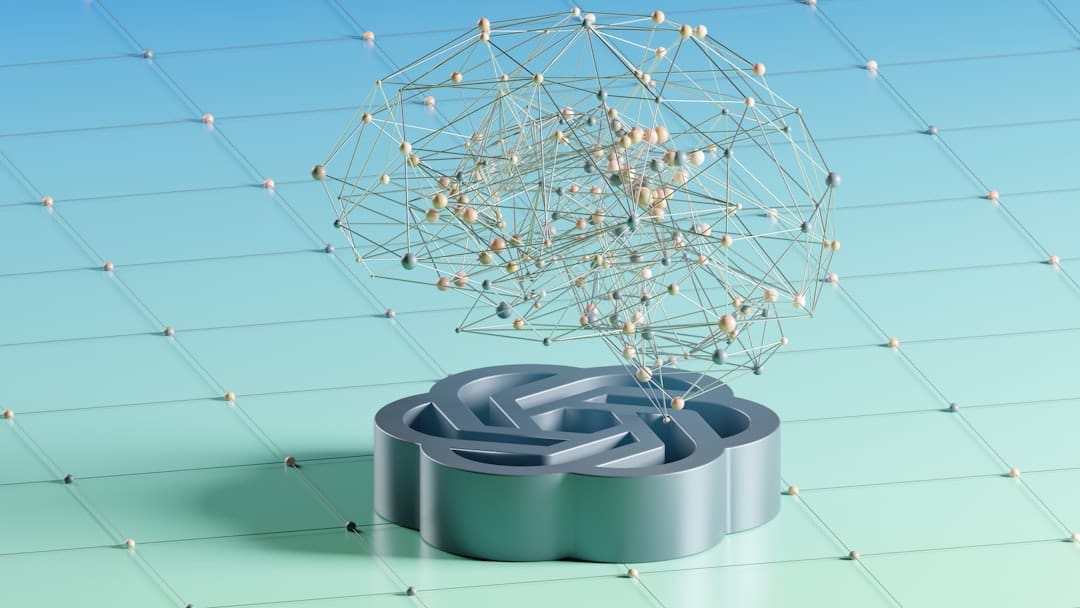Category: Neural Networks
-

Advancements in Machine Learning and Neural Networks
Machine learning and neural networks have significantly advanced artificial intelligence (AI) since the 1950s. Initially, researchers focused on developing algorithms to recognize patterns and make predictions using historical data. neural networks, inspired by the human brain, gained prominence in the 1980s. Neural networks consist of interconnected nodes or “neurons” that process and transmit information. These…
-

Unveiling the Power of Multi Layer Perceptron
Multi Layer Perceptron (MLP) is a type of artificial neural network commonly used in artificial intelligence. It is a feedforward neural network, meaning the connections between nodes do not form cycles. MLPs consist of multiple layers: an input layer, one or more hidden layers, and an output layer. Input layer nodes represent input features, while…
-

Unleashing the Power of Spiking Neural Networks
Spiking Neural Networks (SNNs) are artificial neural networks designed to emulate the functioning of biological neural networks more closely than traditional artificial neural networks. SNNs utilize discrete spikes or pulses for information transmission, mirroring the communication method of neurons in the brain. This approach contrasts with conventional artificial neural networks, which employ continuous values for…
-

Unleashing the Power of Liquid Neural Networks
Liquid Neural Networks (LNNs) represent a novel approach to artificial neural networks, distinct from traditional architectures in both structure and function. Inspired by the adaptability of the human brain, LNNs feature neurons connected in a random and dynamic manner, creating a fluid structure that enables continuous adaptation and learning. This dynamic connectivity allows LNNs to…
-

Advancing AI with Graph Neural Networks
Artificial Intelligence (AI) has experienced significant progress in recent years, with Graph Neural Networks (GNNs) emerging as a key technology driving this advancement. GNNs are powerful tools for analyzing and processing data that can be represented as graphs, such as social networks, molecular structures, and recommendation systems. By utilizing the inherent structure and relationships within…
-

Advancing AI with Physics-Informed Neural Networks
Physics-informed neural networks (PINNs) are an innovative approach in artificial intelligence that integrates physical laws and principles into neural network architectures. This integration allows PINNs to model and simulate complex physical systems more effectively than traditional machine learning methods. By combining the flexibility of neural networks with fundamental physical principles, PINNs offer a powerful tool…
-

Exploring the Complex Connections of Graph Networks
Graph networks are a fundamental concept in artificial intelligence and machine learning, providing a structured approach to representing relationships between entities. These networks consist of nodes, which represent individual objects or elements, and edges, which denote the connections or interactions between these nodes. This framework enables the modeling of intricate relationships and dependencies across diverse…
-

Unleashing the Power of Deep Belief Networks
Deep Belief Networks (DBNs) are a type of artificial neural network that have gained significant attention in the field of artificial intelligence (AI) due to their ability to learn and represent complex data. These networks are composed of multiple layers of interconnected nodes, each layer learning to represent the data in a progressively more abstract…
-

Exploring the Surreal World of Google Deep Dream
Google Deep Dream is an artificial intelligence (AI) application that uses neural networks to generate surreal and dreamlike images. The process involves analyzing and enhancing patterns in existing images, resulting in visually striking and often unusual artworks. This technology represents a fusion of AI and creativity, expanding the possibilities for artistic expression. The emergence of…
-

Exploring the Power of Convolutional Layers in Image Recognition
Convolutional layers are essential components of convolutional neural networks (CNNs), which have significantly advanced image recognition and artificial intelligence. These layers are designed to automatically learn hierarchical spatial features from input images. Their structure is inspired by the human visual cortex, which excels at recognizing patterns and features in visual information. Convolutional layers employ a…
-

Unveiling the Power of CNN Layers
Convolutional Neural Networks (CNNs) are a specialized type of artificial intelligence algorithm designed for processing and analyzing visual data. These networks consist of multiple layers, each serving a specific purpose in image recognition. The primary components of a CNN include convolutional layers, pooling layers, activation functions, fully connected layers, and dropout layers. Each layer contributes…
-

Understanding Convolutional Neural Networks
Convolutional Neural Networks (CNNs) are a type of deep learning algorithm designed to process and analyze visual data, such as images and videos. Inspired by the human visual cortex, CNNs automatically learn and extract features from raw input data. They have become essential in many modern artificial intelligence (AI) applications, including image recognition, object detection,…
-

Exploring Computer Vision with CS231n
Computer vision is a branch of artificial intelligence focused on enabling computers to interpret and understand visual information. This field involves developing algorithms and techniques that allow machines to extract meaningful data from images and videos. Stanford University offers a highly influential course in computer vision called CS231n, also known as “Convolutional Neural Networks for…
-

Exploring the Impact of NLP on Sentiment Analysis
Natural Language Processing (NLP) is a subfield of artificial intelligence that focuses on the interaction between computers and human language. It involves developing algorithms and models that enable machines to comprehend, interpret, and generate human language effectively. NLP has numerous applications, including machine translation, speech recognition, information retrieval, and sentiment analysis. Sentiment Analysis, also referred…
-

Unlocking the Power of AI and Neural Networks
Artificial Intelligence (AI) is a field of computer science focused on developing systems capable of performing tasks that typically require human intelligence. These tasks include learning, problem-solving, natural language comprehension, and pattern recognition. Neural networks are a fundamental component of AI, consisting of algorithms inspired by the structure and function of the human brain. These…
-

Unleashing the Power of Deep Neural Networks
Deep neural networks (DNNs) are artificial intelligence algorithms modeled after the human brain’s structure and function. They are designed to recognize patterns and make decisions in a manner similar to human cognition. DNNs are composed of multiple layers of interconnected nodes, or neurons, that process and transform input data to generate an output. Each layer…
-

Unleashing the Power of Neural Networks in AI
Neural networks are a key component of artificial intelligence (AI), designed to emulate the human brain’s information processing. These networks comprise interconnected nodes, or “neurons,” that collaborate to analyze complex data. Each neuron receives, processes, and transmits information to other neurons. This interconnected structure enables neural networks to identify patterns, make decisions, and learn from…
-

Unleashing the Power of Deep Neural Nets
Deep neural networks (DNNs) are advanced artificial intelligence systems modeled after the human brain’s neural structure. These networks consist of multiple interconnected layers of artificial neurons that collaboratively process and analyze complex data. DNNs excel at learning from vast amounts of labeled data, enabling them to identify patterns, make predictions, and solve intricate problems across…
-

Advancing AI with Graph Neural Networks
Graph Neural Networks (GNNs) are a powerful class of machine learning models designed to process and analyze graph-structured data. Unlike traditional neural networks that operate on grid-like data such as images or sequences, GNNs can handle complex relational data represented as graphs, consisting of nodes and edges. This capability makes them particularly useful for tasks…
-

Unleashing the Power of Neural Networks
Neural networks are a key component of artificial intelligence (AI), drawing inspiration from the human brain’s structure and function. They consist of algorithms designed to identify patterns in various types of data, including images, sound, and text. These patterns can be utilized for making predictions or decisions. neural networks are composed of interconnected nodes, or…
-

Unlocking the Power of Artificial Neural Networks
Artificial Neural Networks (ANNs) are computational models inspired by the human brain’s structure and function. They consist of interconnected nodes, or “neurons,” that collaborate to process and analyze complex data. Each neuron receives input signals, processes them using a specific function, and produces an output signal. These neurons form layers within the network, with each…